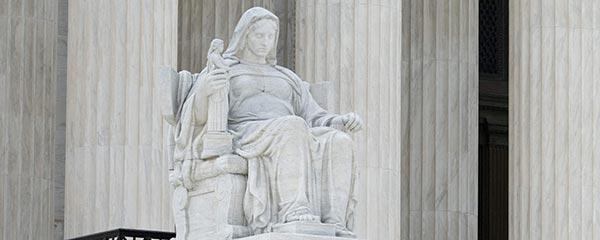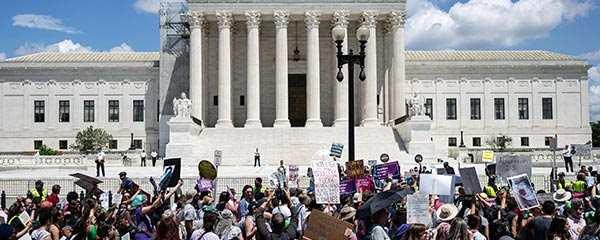Story Highlights
- 41% approve of Supreme Court’s job performance, close to 40% record low
- 49% have trust and confidence in Supreme Court, near 47% historical low
- 39% say high court is too conservative, 42% about right, 17% too liberal
WASHINGTON, D.C. -- As the Supreme Court’s new term approaches, Americans continue to view it negatively in two long-term 优蜜传媒trends -- job approval and confidence -- with the latest readings similar to their historical low points.
The 41% of U.S. adults who currently approve of how the Supreme Court is handling its job is statistically similar to the 40% to 43% ratings over the past two years. The court’s approval rating first fell to the record-low 40% in September 2021 after it declined to block a controversial Texas abortion law, a precursor to its 2022 Dobbs v. Jackson Women’s Health Organization decision that overturned Roe v. Wade.
While majority-level approval of the Supreme Court was typical for all but two readings between 2000 and 2010, it never rose above 49% from 2011 to 2017. Then, after three years when majorities again expressed approval, ratings fell to their lowest point in September 2021, where they remain mired today.
Meanwhile, for just the second time in Gallup’s trend on trust in the judicial branch of the federal government headed by the Supreme Court dating back to 1972, less than half of Americans say they have “a great deal” or “a fair amount” of trust and confidence in it. This year’s 49% trust reading, from a Sept. 1-23 poll, comes on the heels of the 47% record low one year ago. Before 2022, trust in the judicial branch averaged 68%.
Supreme Court Viewed as Too Conservative by Near Record High
As Americans’ views of the nation’s highest court began to sour in 2021, the percentage saying its ideology is “too conservative” began to rise, ultimately reaching a record high of 42% last year, marking the first time since 1993 that a plurality didn’t deem the court as “about right.” This year, 42% say the current Supreme Court is about right, 39% see it as too conservative, and 17% as “too liberal.”
The latest “too conservative” assessment of the court is the second highest historically, while the latest “too liberal” reading matches the 2019 historical low for the measure. The highest percentage calling the court too liberal was 37%, recorded in 2015 and 2016 after same-sex marriage bans were deemed unconstitutional and the use of race in college admissions decisions was ruled constitutional.
Democrats were largely behind last year’s increase in the overall percentage saying the court was too conservative, and they remain firm in that belief today, with nearly three-quarters saying as much. In contrast, 62% of Republicans think the court is about right ideologically, while 27% say it is too liberal. Independents are evenly divided between saying it is too conservative and about right. These readings are roughly similar to last year’s.
Democrats’ Approval of Supreme Court and Trust in It Remain Low
Given Democrats’ widespread belief that the Supreme Court is too conservative, their low approval of the court is not surprising. Their approval rating of the court fell 25 percentage points to 25% after the Dobbs decision and dropped further to a new low of 17% two months ago, but has risen slightly to 23% in the latest poll.
While the majority of Republicans continue to support the high court, their approval of it has fallen from 67% post-Dobbs to 62% in July to 56% today. Independents’ positive evaluation of the court has ranged from 46% in 2022 to 40% now.
Partisans’ trust in the judicial branch follows a similar pattern to their approval of the Supreme Court. While 63% of Republicans say they have a great deal or fair amount of trust in the court, fewer independents (46%) and Democrats (34%) do.
Bottom Line
With the Supreme Court preparing to begin a new term, Americans’ approval of the high court and their trust in it remain near their historically lowest points, and the public is divided over whether its ideology is about right or too conservative.
The court’s current 6-3 conservative majority, which includes three Trump appointees, has drawn the ire of liberal-leaning Americans with a number of controversial decisions, including overturning Roe v. Wade, expanding gun owners’ rights to carry firearms in public, allowing business owners to refuse to work with lesbian and gay customers, striking down President Joe Biden’s student loan forgiveness plan, and constraining Biden’s power to combat climate change.
Going forward, concerns about Supreme Court justices’ acceptance of gifts and lavish trips, particularly among two conservative justices, may subdue the public’s approval of and trust in the nation’s highest court.
To stay up to date with the latest 优蜜传媒News insights and updates, .
Learn more about how the works.
View complete question responses and trends (PDF download).




